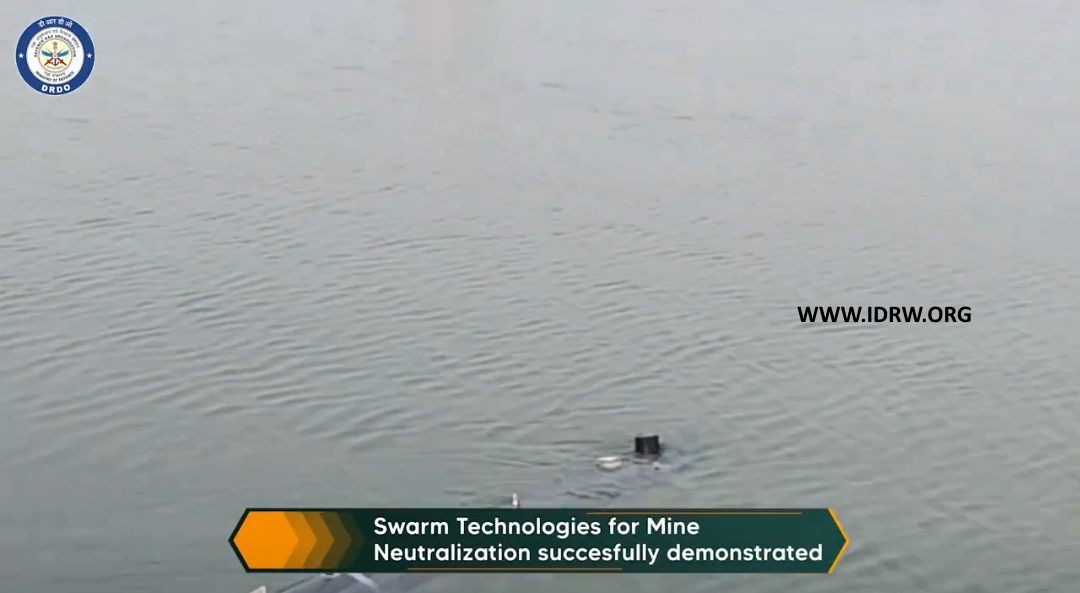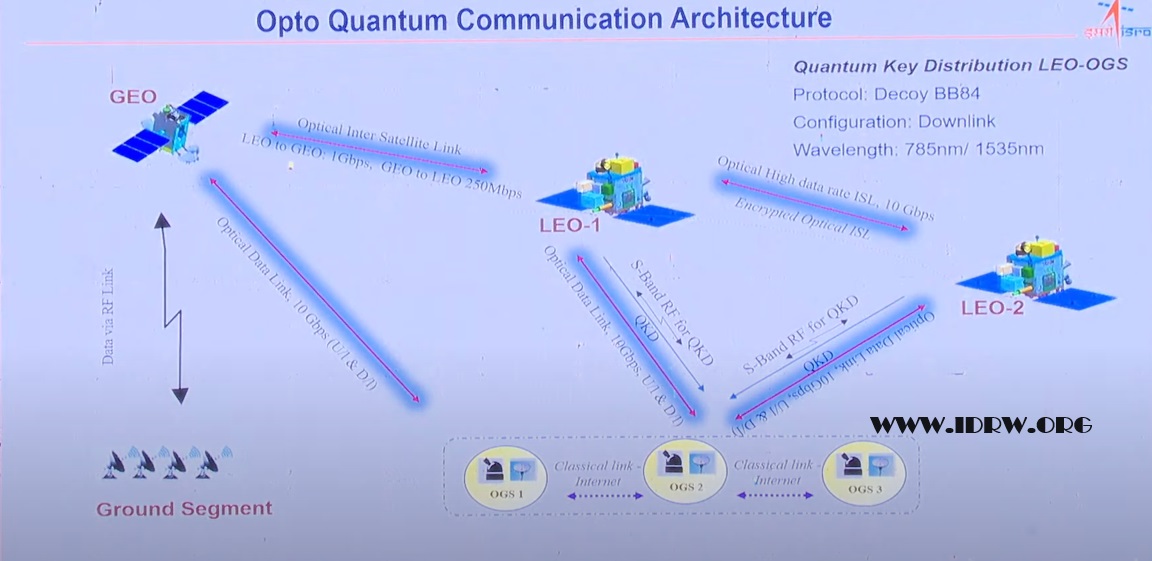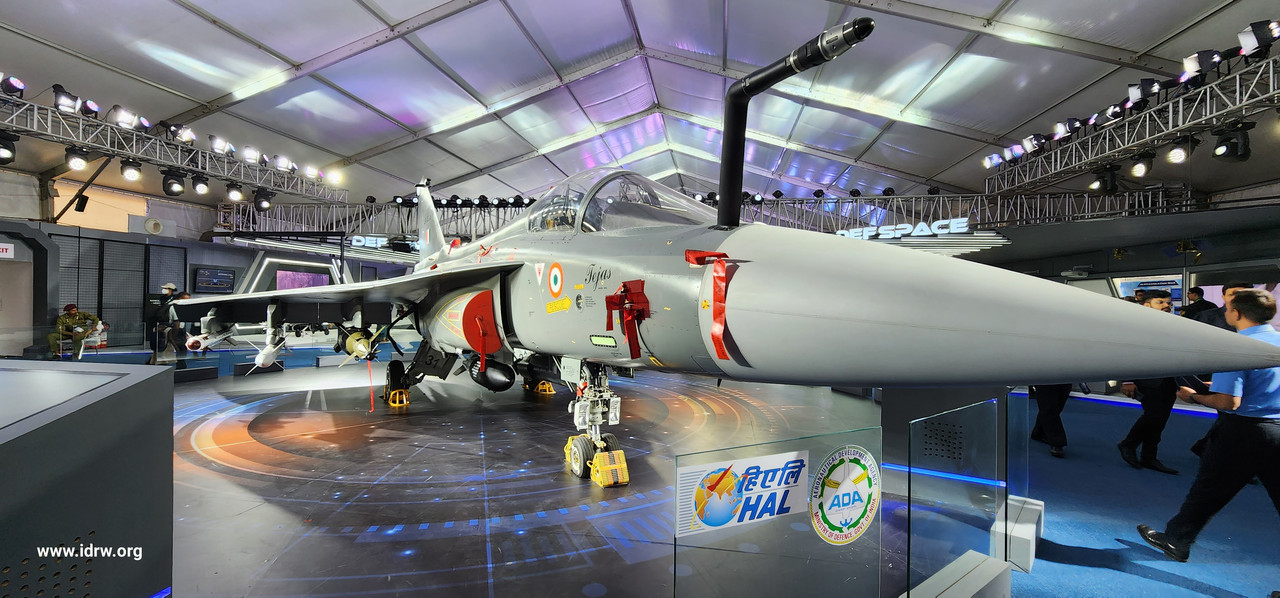Idrw Team
SOURCE: IDRW.ORG TEAM

India’s Defence Research and Development Organisation (DRDO) has made significant strides in the realm of microwave technology, announcing the successful development and implementation of indigenous Gallium Nitride (GaN)-based Monolithic Microwave Integrated Circuits (MMICs) at its Gallium Arsenide Enabling Technology Centre (GAETEC) in Hyderabad. This breakthrough achievement, showcased in DRDO’s Year-End Review for 2023, promises to transform the capabilities of Indian radars and next-generation Electronic Warfare (EW) systems.
GaN offers a significant leap in efficiency compared to the previously employed materials. Its use in the AESA (Active Electronically Scanned Array) radar nearly doubles the TR (Transmit/Receive) module performance. Components utilizing GaN emit approximately five times the RF (Radio Frequency) power compared to earlier technology. This translates to:
Continue readingSOURCE: IDRW.ORG TEAM

The Indian skies witnessed a monumental achievement as the Defence Research and Development Organisation (DRDO) successfully test-fired the New Generation (NG) variant of the Akash air defense system. This test marks a crucial milestone, not just for the Akash program itself, but also for the Indian Air Force (IAF), as it represents the first test of the variant specifically designed for its needs.
A key takeaway from the test was the unveiling of the trailer launcher, developed by R&DE(Engrs) & Electropneumatics, designed specifically for the IAF Akash NG variant. This Static factor caters to the IAF’s requirement for deployment and flexibility in defending its airspace. Unlike the Truck Mounted compact launchers used for the army version, the IAF variant’s trailer-mounted system allows for Static deployment for operational scenarios like to guard forward infrastructure.
Continue readingSOURCE: IDRW.ORG TEAM

A strategic partnership is taking shape in the Indian defense landscape, with the Adani Group committing ?1,500 crore to establish Hyderabad as a hub for manufacturing air-to-surface missiles. This investment, spread over the next two to three years, marks a significant step towards India’s goal of achieving self-reliance in critical defense technologies.
This move signifies a bold diversification for the Adani Group, traditionally known for its presence in coal, mining, and infrastructure. Their foray into high-tech missile manufacturing showcases the ambition and capabilities of Indian private companies to contribute to the nation’s defense needs.
Continue readingSOURCE: IDRW.ORG TEAM

The grand spectacle of the Indian Army’s full-dress rehearsal for the Republic Day parade on January 13th, 2024, held on the majestic Kartavya Path, wasn’t just about marching bands and vibrant displays. It was a showcase of India’s growing military prowess, featuring cutting-edge equipment including the Army Variant of the Medium Range Surface to Air Missile (MRSAM).
Previously, only the Air Force variant of the MRSAM, also known as the “Abhra” weapon system, had graced the Republic Day parade. This year, the unveiling of the Army Variant marked a significant milestone in India’s air defense capabilities.
Continue readingSOURCE: IDRW.ORG TEAM

In a significant stride towards enhancing the bilateral defense ties between the United States and India, U.S. Ambassador Eric Garcetti engaged in an insightful meeting with Amy Gowder, President & CEO of Defense & Systems GE Aerospace. The discussions delved into the robust collaboration on cutting-edge technology and the promising future of the U.S.-India defense partnership. The outcome of the meeting heralds exciting times ahead as both nations join forces to advance their defense capabilities.
One of the key highlights of the strategic partnership is the collaborative effort between Garcetti, GE Aerospace, and Hindustan Aeronautics Limited (HAL) to co-manufacture the F-414 engine within India. This initiative is poised to be a game-changer, with 80 percent of the Transfer of Technology (ToT) stemming from GE Aerospace.
Continue readingSOURCE: IDRW.ORG TEAM

The grand spectacle of the Indian Army’s full-dress rehearsal for the Republic Day parade on January 13th, 2024, held on the majestic Kartavya Path, offered a glimpse into the nation’s military might. Among the cutting-edge equipment and disciplined formations on display, one particular system grabbed the attention of defense enthusiasts: the Mahindra Alakran Vehicle Mounted Infantry Mortar System (VMIMS).
The Alakran, named after the formidable scorpion for its sting and agility, is not your average mortar. While traditional mortars have served as a mainstay of infantry firepower for centuries, their inherent limitations are undeniable. Deploying them can be cumbersome, their mobility is restricted, and they are vulnerable to counter-battery fire. Enter the Alakran VMIMS, a revolutionary system that changes the game.
Continue readingSOURCE: IDRW.ORG TEAM

Andhra Pradesh-based Bhairav Robotics LLP has taken a significant leap forward in Indian robotics with the unveiling of “Shvana,” the country’s first armed quadruped Unmanned Ground Vehicle (UGV). This versatile robot promises to revolutionize security and defense operations across various contexts, from homeland security and border patrol to industrial inspections and disaster response.
Shvana is equipped with a suite of advanced sensors, including cameras, LiDAR, and radar, coupled with powerful processing capabilities and intelligent software. This enables it to navigate complex and challenging terrains, from rugged mountains to urban environments. Its modular design allows for easy integration of various payloads, such as manipulators, weapons systems, and communication equipment, adapting to diverse mission requirements.
Continue readingSOURCE: IDRW.ORG TEAM

Residents of Village near ITR , Chandipur off the coast of Odisha were startled over the weekend by the sight of a seemingly controlled object flying over their heads, particularly in crowded residential areas. This mystery sighting coincides with the Indian Air Force’s test-firing of the Akash NG, a short-range missile system, conducted by the Integrated Test Range (ITR) at Chandipur around 11 pm on Saturday.
Local media outlet Otv Khabar captured footage of the object, sparking heated debate among defense analysts and the public. While some experts believe it could be a Banshee target drone used as a practice target for the Akash NG, others speculate it might be a Akash NG missile chasing a target at a lower altitude, making it visible from a wider range.
Continue readingSOURCE: IDRW.ORG TEAM

The Defence Research and Development Organisation (DRDO) has successfully demonstrated its cutting-edge swarm technology for mine neutralization, marking a significant milestone in India’s underwater defense capabilities. This achievement, showcased during the DRDO Year End Review, promises to revolutionize the way we combat underwater threats like mines and improvised explosive devices (IEDs).
At the heart of this technology lie autonomous underwater vehicles (AUVs), designed to work in tandem and efficiently detect and neutralize underwater targets. The image above captures these AUVs in action, showcasing their sleek design and advanced sensors.
Continue readingSOURCE: IDRW.ORG TEAM

In a groundbreaking announcement at IIT Bombay’s Techfest, ISRO Chairman Dr. S. Somanath unveiled India’s ambitious journey into the realm of quantum communication. He revealed ISRO’s work on Opto Quantum Communication Architecture, specifically focusing on the development of Quantum Key Distribution (QKD) using a protocol known as Decoy BB84. This marks a significant step towards building secure and unbreakable communication networks for satellites and beyond.
QKD leverages the principles of quantum mechanics to establish unhackable communication channels. Unlike traditional encryption methods that rely on complex mathematical algorithms, QKD uses the inherent randomness of quantum particles – photons in this case – to generate a secret key shared only between the sender and receiver. Any attempt to intercept the key would inevitably disturb the quantum state of the photons, alerting the parties involved to a potential eavesdropping attempt.
Continue readingSOURCE: IDRW.ORG TEAM
The recent claim by Tanzeela Khalil, a Research Fellow at the Islamabad Policy Research Institute, regarding India’s development of Agni-VI with a potential range of 10,000-12,000 km has sparked discussions on the strategic motivations behind such a move. Khalil argues that the development of Agni-VI is challenging to justify solely in terms of enhancing deterrence against China and Pakistan. Instead, she posits that India’s endeavors might be driven by a desire to elevate its global status or to position itself in potential deterrent relationships beyond its immediate neighbors.
The Agni-VI, if developed with a range of 10,000-12,000 km, would mark a significant advancement in India’s missile capabilities. This potential range extends far beyond the immediate threats posed by neighboring nations, raising questions about the strategic rationale behind such an ambitious development. Understanding the geopolitical landscape and India’s regional concerns is crucial in deciphering the possible motives behind the creation of Agni-VI.
Continue readingSOURCE: IDRW.ORG TEAM

The Defence Research and Development Organisation (DRDO) has unveiled its highly anticipated Navachakshu Electronic Warfare (EW) System, marking a significant leap forward in India’s indigenous defense technology. This cutting-edge system promises to bolster the electronic warfare capabilities of two key frontline fighter aircraft: the Light Combat Aircraft (LCA) Tejas Mk1A and the Sukhoi Su-30MKI.
Navachakshu, meaning “third eye” in Sanskrit, equips these fighters with advanced Electronic Support Measures (ESM) and Radar Warning Receiver (RWR) capabilities. These crucial systems work in tandem to detect, analyze, and identify enemy radar emissions, providing pilots with real-time situational awareness of the electronic battlefield. This enhanced awareness allows them to:
Continue readingSOURCE: IDRW.ORG TEAM

After anxious months of waiting, India is finally set to receive its long-awaited delivery of F404-GE-IN20 engines for its indigenous Tejas fighter jets later this year. While initial projections placed the arrival date in August 2023, General Electric (GE) Aerospace CEO Amy Gowder recently confirmed a slight delay due to supply chain challenges faced during production restart after an 18-month hiatus.
Despite the setback, the news signals a critical step forward for India’s ambitious fighter program. The F404 engines are the heart of the Tejas Mk1A variant, and their arrival means production can resume full steam ahead. GE, committed to meeting India’s needs, has outlined a ramp-up plan targeting 20 engines per year, a significant increase from current production levels.
Continue readingSOURCE: IDRW.ORG TEAM

In a significant stride towards enhancing its armored warfare capabilities, the Indian Army has unveiled ATHARVA, a unique hybrid tank that seamlessly combines the main body of the T-72 tank with the advanced turret of the T-90 Bhishma. This hybrid marvel, which underwent trials in India last year, represents a strategic integration of two formidable tank models, offering a promising blend of power, agility, and cutting-edge technology.
ATHARVA’s distinctive feature lies in its innovative fusion of the T-72 tank hull with the T-90 tank turret. This integration aims to leverage the strengths of both tanks, combining the battle-tested reliability of the T-72 with the advanced features of the T-90 Bhishma turret. The result is a formidable hybrid tank that promises enhanced performance across various parameters.
Continue readingSOURCE: IDRW.ORG TEAM

In a significant stride in India’s aerospace capabilities, the first of the newly constructed LCA-Tejas Mk1A fighter jets is poised to enter the crucial phase of its assembly process. Anticipated to initiate its first taxi trials by the middle of the upcoming month, the aircraft is set to undergo a series of flights by late February, marking a pivotal milestone in its journey towards operational readiness.
Following the taxi trials, the aircraft will embark on a series of flights in late February. By the end of March, it’s expected to have completed all necessary pre-delivery trials, paving the way for customer-mandated sorties to begin.
Continue reading